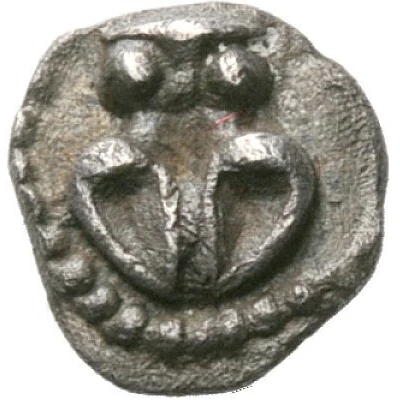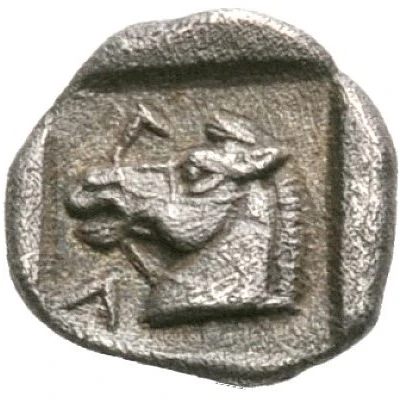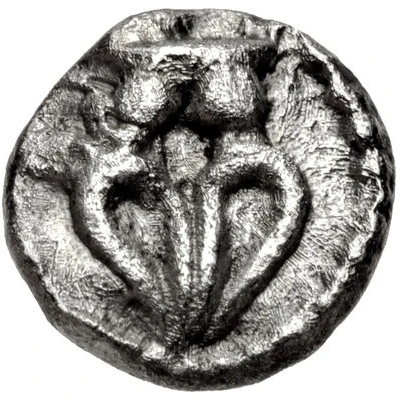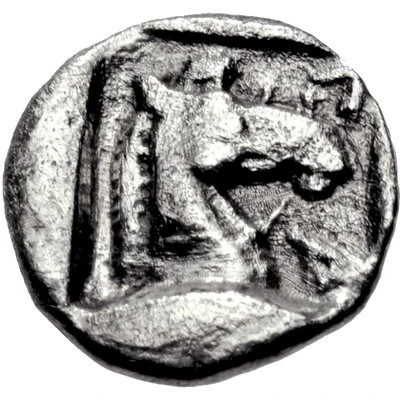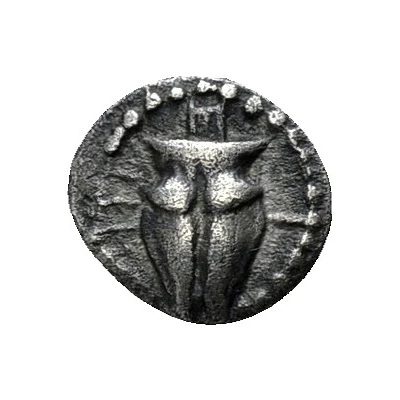
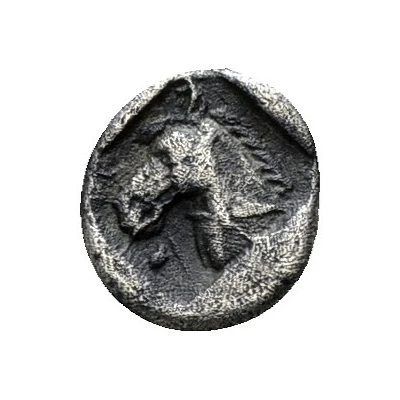

© Savoca Numismatik GmbH & Co. KG
Hemiobol 462 BC - 460 BC
| Silver | 0.4 g | 7 mm |
| Issuer | Larissa (Thessaly) |
|---|---|
| Type | Standard circulation coin |
| Years | 462 BC - 460 BC |
| Value | Hemiobol (1⁄12) |
| Currency | Drachm |
| Composition | Silver |
| Weight | 0.4 g |
| Diameter | 7 mm |
| Shape | Round (irregular) |
| Technique | Hammered, Incuse |
| Demonetized | Yes |
| Updated | 2024-10-10 |
| Numista | N#285458 |
|---|---|
| Rarity index | 100% |
Reverse
Head of bridled horse to left and all within incuse square.
Interesting fact
The Hemiobol coin was used as a form of currency in ancient Greece, specifically in the city-state of Larissa (Thessaly) during the 5th century BC. The coin's name "Hemiobol" comes from the Greek words "hēmi-" meaning "half" and "bolos" meaning "throw", which refers to the coin's value being equal to half the value of a standard unit of weight, the "bolos". This coin was made of silver and weighed 0.4 grams, which was a significant amount for a coin at that time. Despite its small size, the Hemiobol played an important role in the economy of Larissa and surrounding regions, as it was widely used for trade and commerce.
